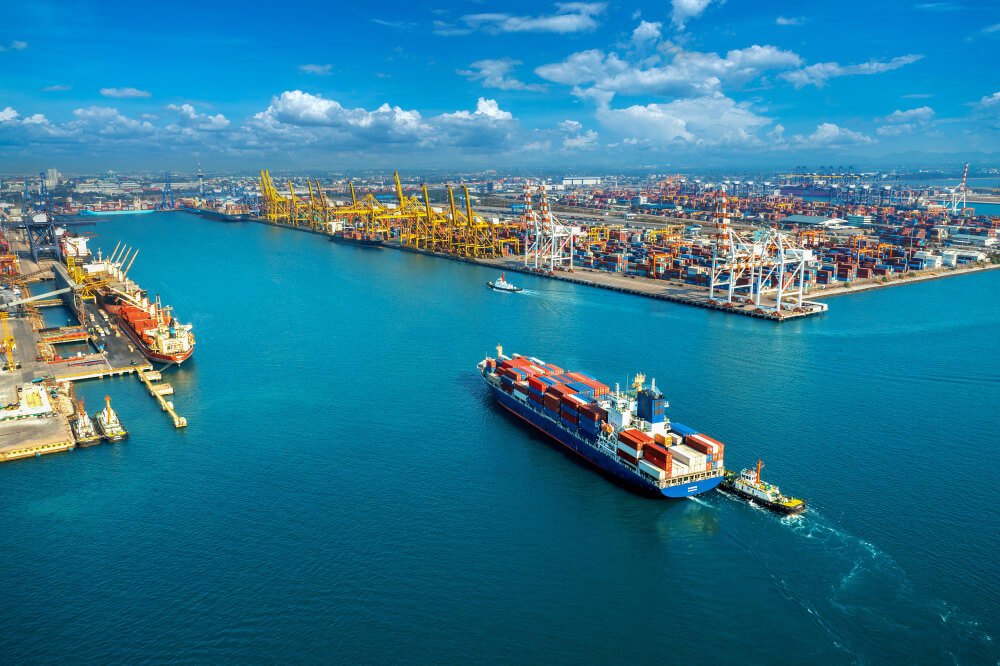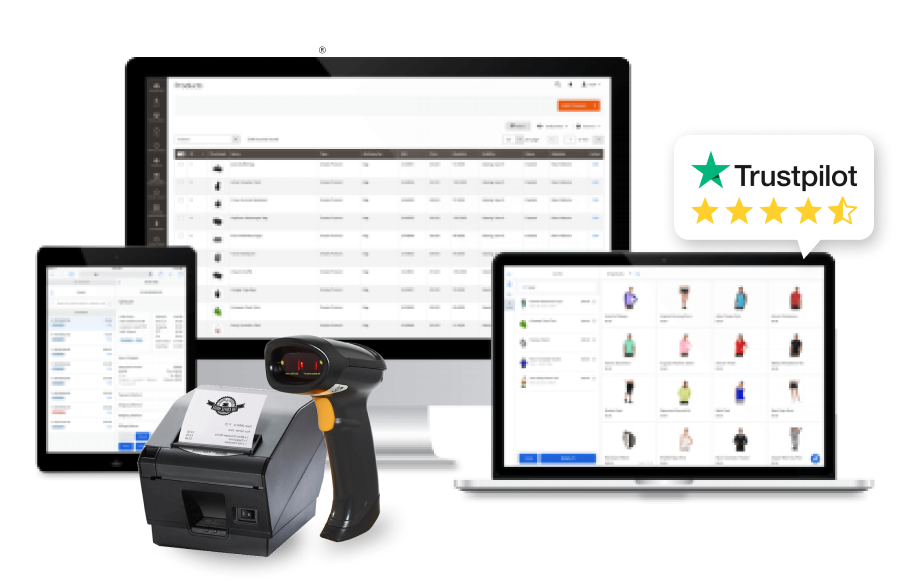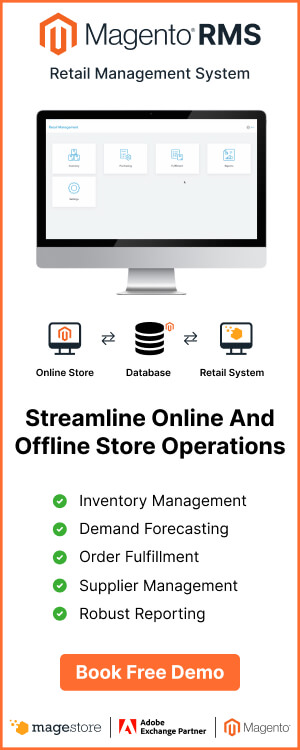3PL and 4PL are the 2 popular terms for fulfillment providers. While they both refer to the outsourcing of logistic activities to an external party, there are some differences between 4PL vs 3PL. Understanding the distinctions will help you decide which type of logistic service is right for your business. In this article, you’ll explore the definition, the process, the advantages of each model, how they are different from each other, and the right logistic method for you.
What does 3PL mean?

Third-party logistics (3PL) involves the outsourcing of logistics processes to a 3rd-party business, such as warehousing, inventory management, and order fulfillment. 3PL providers help retail stores and product companies store, package, and transport goods more efficiently by automating retail order fulfillment.
A 3PL serves as a middleman between your company and the carriers who deliver your products to customers. It’s common for 3PLs to manage or own their facilities such as warehouses and trucks to store and fulfill customers’ orders.
A typical 3PL offers a set of integrated supply chain services, including:
- Transportation,
- Warehouse inventory management,
- Packaging,
- Cross-docking,
- Freight forwarding.
3PL process

Step 1: Receiving
The receiving stage is the acceptance of incoming inventory to store in 3PL warehouses. Manufacturers and sellers can fill out a warehouse receiving order (WRO) to inform the 3PL company of which products and the quantity will be received. Thus, the 3PL can organize timely receipts and fulfill orders more quickly and efficiently.
Step 2: 3PL Warehousing
After receiving the stock, the 3PL stores the items in their fulfillment centers. Based on the SKUs, products are arranged in separate dedicated storage locations such as a shelf, a bin, or a pallet.
Since the storage capacities are different for each 3PL, you should choose the logistic provider that can handle more inventory than your current level. As your product line and order increase, the 3PL storage space must be able to scale accordingly.
Step 3: Picking
When a customer places an order, the 3PL order fulfillment process happens. Traditionally, 3PLs require you to manually upload order spreadsheets to their system – a time-consuming and error-prone way to manage orders. In contrast, today high-tech 3PLs can integrate with your eCommerce platform or marketplace and push customers’ orders to your 3PL automatically.
When an order is sent to your 3PL, a picking team will handle it. The picker gets a picking list of the items, quantities, and storage locations to collect the ordered products.
Step 4: Packing
Next, it’s time to pack the ordered items securely for shipping. The packing materials can vary from unbranded boxes, poly bags, packing tape, bubble mailers, and dunnage. An experienced 3PL will choose the most suitable packing materials to:
- Protect your products to avoid clashing;
- Reach the lowest practical dimensional weight to minimize costs;
- Optimize packages without split shipments.
If you want to offer a consistent shopping experience for your customers, partner with a 3PL that allows you to use custom packaging like custom boxes and inserts. Receiving a package is the first in-person touchpoint your customers have with your brand, make sure it leaves a good impression.
Step 5: Shipping
The next step is shipping your orders to customers. 3PLs usually purchase and print shipping labels on your behalf. They may partner with one carrier or offer clients multiple choices for the most competitive price and delivery speed.
The carriers then pick up orders from 3PL warehouses to ship. The orders will be tracked in the 3PL’s integrated platform and shared with merchants and customers.
Step 6: Returns
Many 3PLs offer return processing services. If a customer wants to return a product, the 3PL will process the shipping of returns and restock the items to your inventory.
What is 4PL?

Fourth-party logistics (4PL) means a logistics model where manufacturers outsource the management of their supply chain and logistics to an external provider. As we progress from 3PL to 4PL, more and more logistics functions are controlled by a service provider rather than the enterprise itself.
For instance, a manufacturer can outsource all their logistics processes such as warehousing, packaging, and delivery to a 4PL company. The 4PL company will then handle all these operations once they receive a purchase order.
Therefore, the manufacturer or retailer can concentrate on other aspects of their business.
Here are the services offered by 4PL in logistics:
- Freight sourcing strategies;
- Logistics implementation;
- Inventory planning and management;
- Analysis of transportation costs;
- Evaluation of carrier performance;
- Effective 3PL management and coordination of a wide supplier base;
- Supervision of inbound, outbound, and reverse logistics;
- Project management;
- Network analysis and designs;
- Analysis of capacity usage.
4PL process

The goal of a 4PL is to oversee the entire supply chain on behalf of your business, including the relationship with multiple 3PLs. Here is the process of how a 4PL works with an eCommerce business:
Step 1: Transportation
A 4PL acts as the focal point to coordinate the transportation of products among parties. Normally, they arrange transportation from the manufacturer to several warehouses operated by a 3PL company.
For retailers, if they create a purchase order to their suppliers, they can assign the transportation of stock to a 4PL provider.
Step 2: Warehousing
Once your products are transferred to the warehouses, a 3PL service will deal with day-to-day fulfillment tasks, including receiving and storing inventory, picking, packing, and shipping orders, as described above for the 3PL process.
Step 3: Inventory management
A 4PL manages your inventory using technology that centralizes stock tracking across different warehouses. All 3PL partners report to a single platform of the 4PL like inventory management software. This gives merchants and manufacturers real-time visibility into their inventory levels in one place.
Step 4: Shipping
Finally, the 4PL handles relationships with a 3PL or carriers to pick up orders from the 3PL warehouses and ship them to customers.
Throughout the entire process, you only manage and interact with the 4PL company. This can save you effort interfacing with various parties like 3PLs and carriers. However, it also limits your control since there is a middle layer of communication.
Key differences between 4PL vs 3PL

The main difference between a third party vs a fourth party company is the accountability and management level. When you outsource the fulfillment operation to a 3PL, you work directly with your 3PL partner and manage their performance. In contrast, a 4PL acts like a trusted advisor, and merchants often rely heavily on their data and services to take care of the supply chain.
Here are the key differences between 3PL and 4PL:
Focus
The focus of a 3PL provider is on the daily activities of order fulfillment, such as warehousing, picking and packing ordered products, and shipping packages. A 4PL takes it to another level by controlling the entire supply chain – which includes fulfillment plus transportation and technology. The fulfillment is still assigned to a 3PL but managed by the 4PL with their solution and technology.
With a 4PL model, you work directly with your 4PL partner to resolve any issues from the supply chain and with other vendors. This allows more management power in the hand of a 4PL, giving you more time for other aspects to grow your business.
Relationship
The relationship with a 3PL is usually transactional. It is often developed around lane costs instead of strategic elements. On the other hand, the relationship with a 4PL provider considers much of a long-term strategy. A good 4PL provider will proactively find bottlenecks and recommend to you how to organize, lead, design, and coordinate your supply chain.
Assets
3PL providers often own many assets needed to run your supply chain, such as trucks, distribution centers, and warehouses. On the contrary, most 4PLs’ assets are intangible. Software, IT systems, and intellectual capital are their competencies. 4PL mainly offers logistics expertise and focuses on finding the suppliers with the best quality and cost for your business.
Cost reduction
3PLs connect with many industry partners and have access to resources like shared warehousing to reduce logistic costs and improve efficiency. Conversely, 4PLs focus on streamlining the entire supply chain. They offer various methods to help you cut costs, such as lean manufacturing, reverse logistics, and optimization of procurement best practices.
Customer communications
All communication is filtered through the 4PL as the main point of contact. This may cause delays in resolving issues since the 4PL is the middleman between the merchants and the 3PLs. The merchants have no ownership on the 3PL level, therefore the logistic service quality will depend on your 4PL’s responsibility.
With a 3PL partner, you can control the same customer service team yourself and may be given a dedicated account manager. Thanks to this, you can resolve issues faster while working with a team that understands your account.
Pros and cons of 4PL and 3PL

According to Statista, the global logistics market reached 8.4 trillion USD in 2021 and is forecasted to exceed 13.7 trillion USD by 2027. 3PL and 4PL are the most common logistic services that help firms run their supply chain and production.
Below are the key pros and cons for each:
| 4PL | 3PL | |
| Pros |
|
|
| Cons |
|
|
Which is better for your business: 3PL vs 4PL?

4PL vs 3PL have their advantages and drawbacks that make them suitable for different types of businesses. Different stages of business will lead to a different choice of a logistic model:
If you’re just starting, go for in-house fulfillment.
As a startup company, you should begin by fulfilling orders in-house if your orders are still under control. Note that this method is often unscalable, as packing and shipping orders is a time-consuming task. Still, you should start with this approach and consider an upgrade to a 3PL gradually if things go well.
If you’re growing rapidly, select the supply chain 3PL model.
As you grow, you need more time for product development, procurement, and marketing activities. The repeated tasks of order fulfillment should be outsourced to scale better. A 3PL will help you execute the fulfillment process, including warehousing, inventory management, picking and packing, and collaborate with carriers to ship products to customers.
If you’re a large enterprise, 4PL is your right choice.
Managing the entire supply chain is a big aspect of a business. Partnering with a professional 4PL with strong expertise to handle the supply chain is a good option. However, a 4PL also adds another layer between you and your supply chain, meaning less control. Due to this, many fast-growing eCommerce businesses stay with a 3PL as long as they have third-party logistics software that can scale over time.
Final thoughts
Both 4PL vs 3PL are important logistics service providers to outsource part(s) or all of your supply chain management. We hope this article has given you knowledge of the key characteristics and differences between 3PL and 4PL. Depending on your business goals and size, you now know which option will do you better.


















This insightful blog has been instrumental in guiding our business decisions regarding logistics. As a company engaged in international trade, the comprehensive breakdown of 3PL and 4PL services has been immensely beneficial. The detailed exploration of 3PL’s involvement in warehousing, order fulfillment, and shipping processes aligned perfectly with our current needs.
Moreover, the explanation of the 4PL model’s ability to oversee the entire supply chain, coordinating multiple 3PLs, has sparked our interest in optimizing our logistics strategy further.